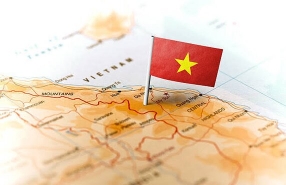What Does Vietnam Flag Represent? Special Meanings Of Vietnam National Flag
Sunday, June 09, 2024
Useful infos

Vietnam captivates tourists not just with its stunning landscapes and warm hospitality, but also with the ubiquitous presence of the Vietnamese flag throughout their journey. Whether traversing bustling cities or serene countryside, the sight of the Vietnam flag is a constant companion. Curious about the significance behind this iconic symbol? Join Autour Asia to delve deeper into the intriguing story of the Vietnamese flag.
Table of Contents
I. Overview about Vietnam national flag
1. Some facts about the Vietnam flag
The red flag gold star (cờ đỏ sao vàng in vietnamese) is the Vietnam national flag, image of Vietnam in the world, has been the symbol of Vietnam since the end of the Vietnam War in 1975, when the North and South of Vietnam were reunited, designed by Mr. Nguyen Huu Tien. According to the country's historians, this Vietnam flag was used for the first time during the revolutionary movements in the South in the 1940s during the Indochina War.

What does the Vietnam flag represent? The national flag of the Socialist Republic of Vietnam is rectangular in shape, with the width equal to two-thirds of the length, red background, and a five-pointed yellow star in the middle. The red background symbolises the sacrifices and bloodshed in the quest for national independence and freedom. It also represents revolutionary spirit and the resolve to build a prosperous future. The large, central yellow star on the Vietnamese flag symbolises the unity of the nation in building nation. Its five points represent the unity of key societal groups: intellectuals, farmers, workers, entrepreneurs, and soldiers, who are crucial to the country's development and defence.
This combination not only reflects Vietnam's past struggles and victories but also its ongoing aspirations for unity, peace, and progress. The Vietnamese flag is a powerful national symbol, evoking a sense of pride and patriotism among Vietnamese citizens.
2. History of Vietnamese flag
Today, the internationally recognized flag of Vietnam symbolises the nation's independence and unity. It first appeared on November 23, 1940, in South Vietnam during the French colonial period, serving as a revolutionary emblem against oppression. Designed by Nguyen Huu Tien, a resistance leader later imprisoned and executed, the flag was a powerful symbol of defiance. In 1941, the flag was showcased at the Viet Minh conference, which was led by Ho Chi Minh. On August 16, 1945, in Tan Trao Village, the Viet Minh officially adopted it as Vietnam's flag.
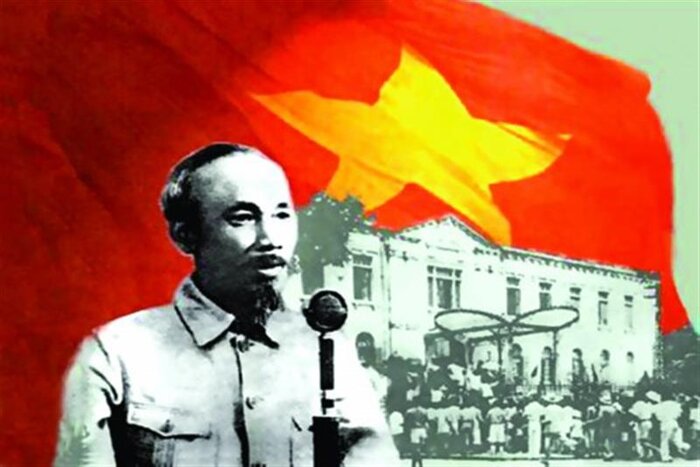
Vietnam declared independence on September 2, 1945, in Hanoi's Ba Dinh Square, making the red flag gold star the national symbol of North Vietnam. However, French troops reinstated colonial rule in South Vietnam in October. Only after the reunification of North and South Vietnam in 1976 did the flag fly over the entire country. Since that time, the red flag with a yellow star has served as Vietnam's official emblem, symbolising the country's cohesion and sovereignty.
3. Occasion to display the Vietnamese flag
The national flag of Vietnam is customarily displayed during significant national festivals, anniversaries, and other important occasions. On September 2, Vietnam celebrates National Day, marking the establishment of the Democratic Republic of Vietnam in 1945, now the Socialist Republic of Vietnam. The flag is prominently displayed on government buildings, political institutions, and public structures.
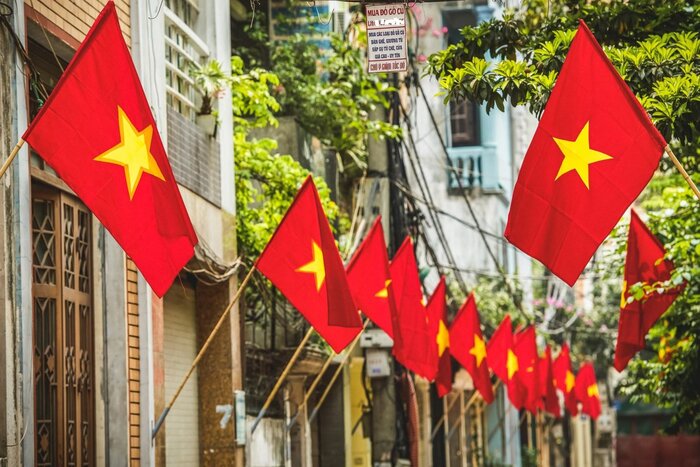
On April 30, Southern Liberation Day and National Reunification is celebrated, commemorating Vietnam's reunification. The country is adorned with red flags and floral decorations, celebrating this victory. International Labor Day on May 1 honours workers' achievements, with the Vietnam flag displayed in public spaces and workplaces as a tribute to the workforce.
During traditional festivals like Lunar New Year and the Mid-Autumn Festival and other festivals,... Vietnamese people proudly display the Vietnam flag outside their homes and along the streets. The flag enhances the festive atmosphere, honouring these culturally significant times

Not only is Vietnam national flag proudly hoisted on special occasions, but now it also ventures alongside tourists as they embark on their voyage through the picturesque landscapes of this country. This revered emblem adorns various keepsakes and mementos that encapsulate the essence of Vietnamese culture, be it the iconic conical hats, stylish headwear, keychains, or T-shirts proudly bearing the symbol of the Vietnamese flag. For those enamoured with Vietnam, these cherished souvenirs from Vietnam are an absolute must-have, serving as enduring reminders of the nation's beauty and allure.
II. The evolution of the Vietnamese flag from historical times to present
The ancient dynasties
At the time of ancient dynasties, the golden yellow colour was omnipresent. This golden yellow represented par excellence the imperial colour, reserved solely for the emperor under whose reign the country was independent. Golden yellow was then associated with the symbol of independence and the nation, while red represented an auspicious colour, that of prosperity and success. Independence, prosperity under the celestial role of emperors, such is the meaning of the Vietnam flag of this era.
The Nguyen flag from 1890 to 1920
It was only later, at the end of the Nguyen dynasty in 1920, that the flag with a yellow background was born, symbolising the Vietnamese people, and the three red lines representing the three regions of Vietnam, Tonkin, Annam and Cocochina respectively.
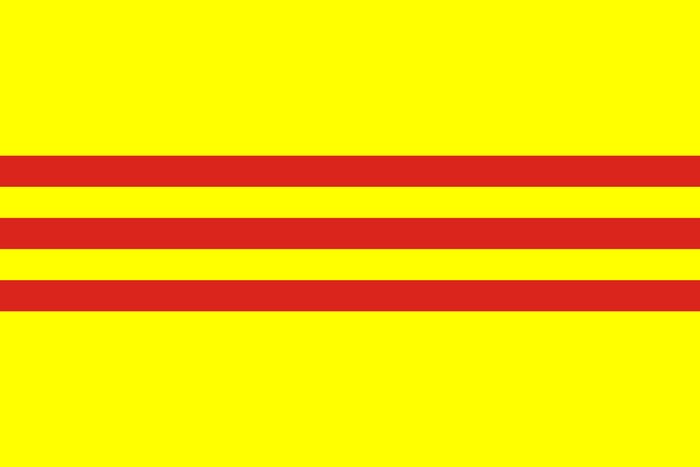
The flag of the Empire of Vietnam from March 1945 to August 1945
After the Japanese took over the French in March 1945, the Empire of Vietnam was declared and became an allied state of the Greater East Asia Co-Prosperity Sphere. Another Vietnamese flag was created and this time with the intention of making it resemble that of Japan to some extent.
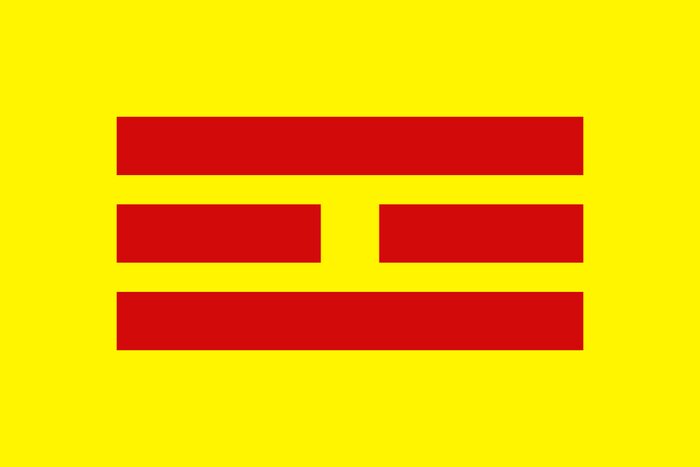
The flag of the Republic of Vietnam by Ngo Dinh Diem
Following the Geneva Accords in 1954, leading to the division of the country in two, the pro-American Republic of the South took over the Nguyen flag from 1890 to 1920 for the official national emblem of the South. The latter is strictly prohibited in the country while it still exists in certain Vietnamese diaspora communities abroad.
The flag of the National front in 1960 and of the Provisional Revolutionary Government in 1969 until 1976
And to counterbalance the government of Ngo Dinh Diem, the National Front for the Liberation of South Vietnam (Viet Cong) was proclaimed in 1960 (later, it became the Provisional Revolutionary Government of South Vietnam in 1969) with a view to encouraging all Vietnamese to come together and lead the struggle for independence and national reunification.
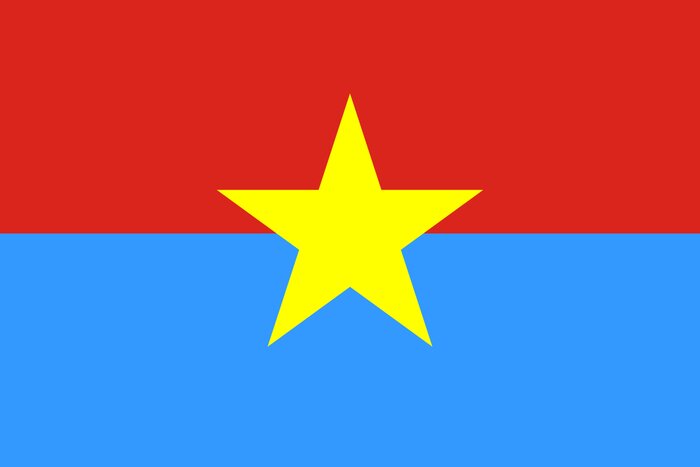
Vietnam national flag (1976 - present)
This national front decided to take back the flag with a yellow star on a red background, until now always used in revolutionary movements since the end of the French war. This flag is however split into two parts, the lower one of which is blue in colour and refers to the colour of peace and hope, designating the hope of this National Front to achieve the final reunification of Vietnam. This flag was officially adopted to represent South Vietnam liberated after April 30 until its dissolution in July 1976.

III. Vietnamese flag in tourist attraction destinations
Vietnam's red flag gold star always appears at all tourist destinations, not only affirming its natural beauty but also affirming its sovereignty, territory and certain characteristics of the S-shaped country.
1. Hanoi Flag Tower
The Hanoi Flag Tower stands as a prominent and historical emblem in the capital city of Hanoi, situated centrally in the Ba Dinh district, is rich in symbolism and epitomises both the illustrious history and the hopeful future of the nation Serving as a testament to Vietnam's quest for independence, the Hanoi Flag Tower was originally constructed in 1812 during the Nguyen dynasty and was later restored in 1894 by the French.

Following the success of the August Revolution in 1945, the Vietnamese flag was raised atop the Hanoi Flag Tower for the first time. This significant moment was echoed on the capital's liberation day, October 10th, 1954. Architecturally noteworthy, the flag tower rises to a height of 33 meters, crowned with a red flag gold star. Its design showcases a harmonious blend of Asian and European styles, featuring three tiers and an observation deck that offers sweeping views of Hanoi.
2. Ba Dinh Square - Vietnam's flag raising and lowering ceremony
The Vietnam national flag is not merely a symbol of the nation's pride, it also holds a prominent place in various national rituals and occasions. One of the key ceremonies is the flag-raising event at Ba Dinh Square, a daily tradition that captures the essence of national pride and commemorates historical sacrifices.
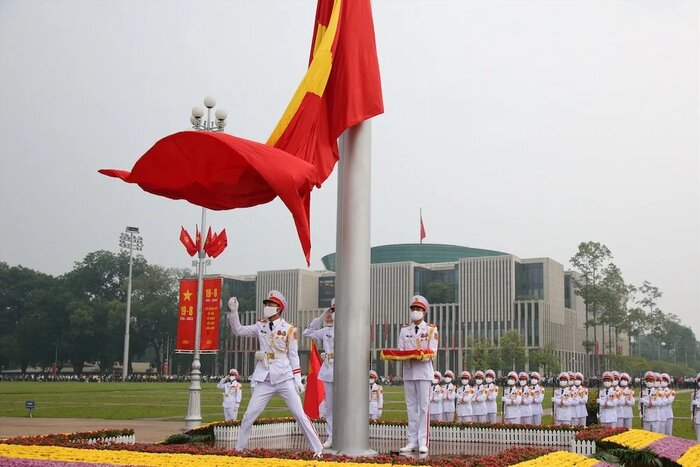
When you visit Hanoi, you can experience the poignant flag-raising and lowering ceremonies at Ba Dinh Square, held each day at 6 A.M. and 9 P.M., regardless of weather. These ceremonies are marked by the rousing sounds of the national anthem played by military personnel in crisp white uniforms. A group of 34 soldiers, typically new recruits from the Vietnam Armed Unit for National Liberation, the predecessor of the Vietnam People & Army, proudly carries the Vietnam flag. While the ceremony is imbued with solemnity, Ba Dinh Square quickly transforms back into a lively centre of community activity. It becomes a popular spot where locals gather, from families enjoying relaxed walks to seniors exercising and friends meeting to catch up.
3. Lung Cu flagpole
Lung Cu flagpole is a significant national monument located in the northernmost part of Vietnam, in Ha Giang Province. It stands atop Lung Cu Peak, also known as Dragon Mountain, near the border with China. The flagpole stands 33 metres tall and is built on a stone base that is 20 metres high, making the total height 53 metres. The base of the flagpole features intricate carvings and motifs that reflect the cultural heritage of Vietnam. At the top of the flagpole flies a large Vietnam national flag, measuring 54 square metres, with the red background and yellow star. The size of the flag symbolises the 54 ethnic groups in Vietnam, representing the unity and diversity of the nation.
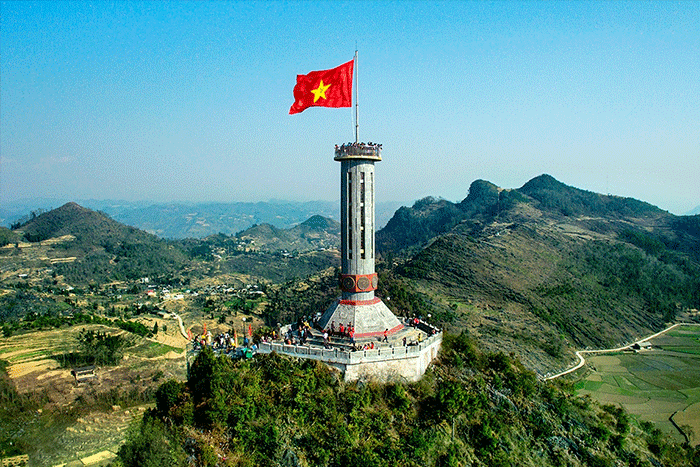
See more: Ha Giang Travel Guide
IV. Others famous Vietnamese flags
In addition to the red flag gold star, you also have the opportunity to see a number of other flags with bold characteristics of Vietnam.
1. The communist flag
The ruling regime in Vietnam, which is the sole political party in the country, adheres to the principles of communism. The Vietnamese flag, featuring a sickle and hammer, aligns with the symbolism of other communist nations, albeit with minor adaptations to the national flag's design. This flag is prominently displayed on all political buildings and at major political events, regardless of their nature.

2. The Vietnamese Buddhist flag
The Vietnamese Buddhist flag, known as (cờ phật giáo in Vietnamese) is a variant of the international Buddhist flag. It consists of six vertical stripes in the following colours from left to right: blue, yellow, red, white, and orange. The final stripe is a combination of all five colours arranged horizontally. These colours represent the aura of the Buddha and symbolise universal values in Buddhism The Vietnamese Buddhist flag is commonly displayed at Buddhist temples, ceremonies, and events in Vietnam.
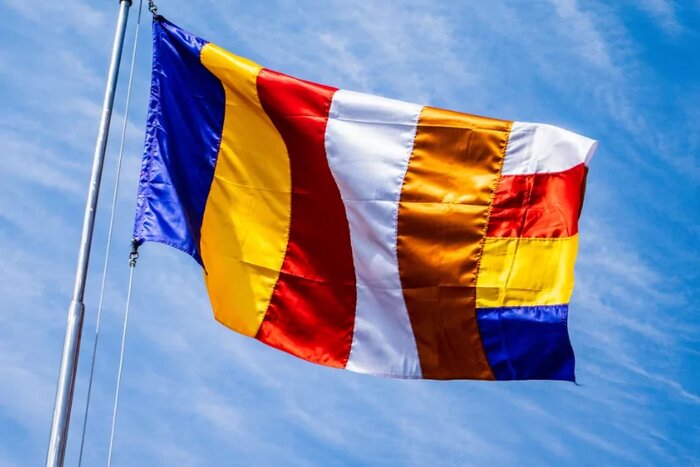
What does the Vietnam flag represent? The Vietnamese flag is far more than a piece of cloth, it represents the very essence of the nation. With its vivid red representing sacrifice and the radiant yellow star symbolising unity, every aspect of its design holds deep significance. As you journey through Vietnam, take note of the Vietnam national flag, it could hold the secrets to unravelling the rich tapestry of this captivating country.
Autour Asia - Vietnam travel agency extends warm wishes for a joyful and blissful holiday, inviting you to savor the genuine beauty of the Vietnamese people.
You might consider consulting the subsequent trip:
>>> 15 day Vietnam itinerary
>>> Vietnam Vacation 18 days
>>> Vietnam itinerary 3 weeks
>>> Our Vietnam Packages Tours
>>> 15 day Vietnam itinerary
>>> Vietnam Vacation 18 days
>>> Vietnam itinerary 3 weeks
>>> Our Vietnam Packages Tours
Related travel guide
Other similar articles
CUSTOMIZABLE BY LOCAL EXPERTS
Personalized trip at the original price!
REFUND GUARANTEE
We believe in our work and promise to give you money back.
GOOD PRICE / QUALITY
95% satisfied more than expected!
24/7 LOCAL SUPPORT
We are always available online to provide assistance at any time.
Most read articles
Autour Asia is highly recommended on
Embracing the mission of "Satisfied more than expected" and providing authentic experiences, we have received numerous recommendations on reputable travel forums:
















